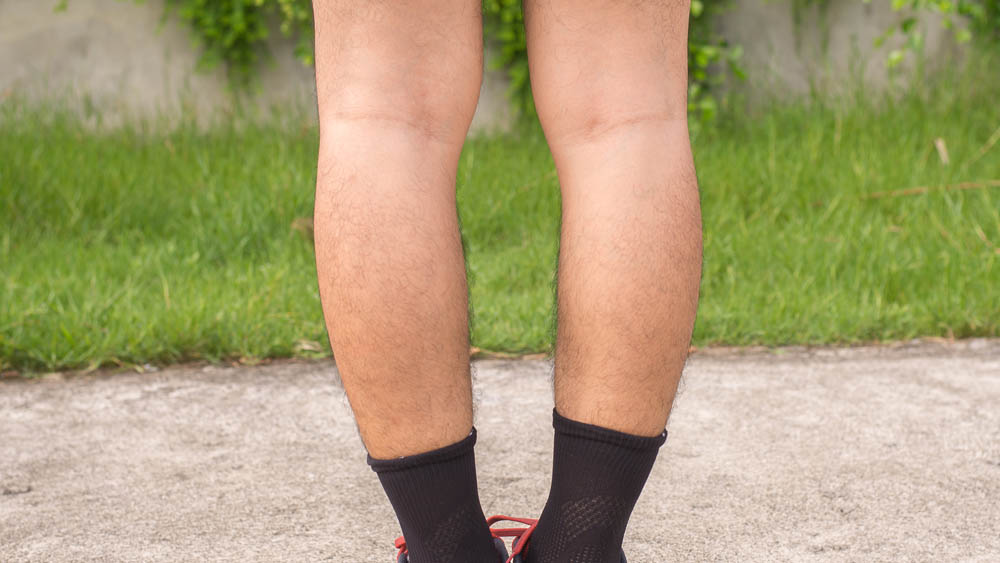Knock Knees Treatment: Do I Have Lipedema?
GET DIAGNOSED
Share on facebook
Facebook
Share on twitter
Twitter
Share on linkedin
LinkedIn
Do your knees painfully touch while walking or simply standing? Here’s straight talk about one of the key indicators of the fatty deposition disorder known as lipedema.
“Knock knees,” medically referred to as genu valgum, is a common knee alignment irregularity identified mostly in young children that causes the knees to invert and touch when standing upright or walking. Though most children will eventually outgrow the physical deformity with age, knock knees can occur later in life due to orthopedic and other health challenges, such as lipedema.
The weight of excess adipose (fatty) tissue in the upper region of the legs causes the knees to almost collapse into one another when standing or walking, making it particularly painful and laborious to remain mobile or active. This disproportionate fat accumulation can lead to mechanical issues, bodily imbalances, deformities, and a host of orthopedic challenges, including degenerative joint disease of the knees and painful, disabling of range of motion.
I Have Knock Knees! What Are My Treatment Options?
Surgical liposuction to the lower extremities is the most effective treatment option to correct the common knock knees condition, thereby correcting compromised knee alignment, reducing pain, and improving a patient’s mobility and quality of life. If performed in the earlier stages of knock knees, liposuction can prevent/postpone total knee replacement surgery, as it removes the debilitating weight of excess adipose tissue and significantly reducing the amount of stress on the knee joints. Early detection and targeted action are keys to overcoming the disorder.
While proper diet and consistent exercise, along with the implementation of other healthy lifestyle factors, play a promising role in reducing the undesirable effects of lipedema sufferers, more aggressive interventions like liposuction yield the most successful outcome for reversing the knock knees syndrome. Though not nearly as successful, other non-invasive approaches include:
- Medications/supplements as prescribed by your healthcare provider
- Regularly scheduled therapeutic massage sessions to help decongest the lymphatic system
- Compression wraps/garments
Water-assisted Liposuction with TIVA
Water-assisted liposuction is a highly specialized form of liposuction that decreases lymphatic congestion and tissue inflammation in the extremities, specifically targeting the vulnerable knee area, and is performed under total intravenous anesthesia (TIVA). TIVA is an innovative combination of IV therapies that eliminates the need for a breathing tube or traditional anesthesia gases, so the patient remains completely asleep without assisted breathing for the duration of the procedure. Once the fatty tissue is removed, the area is re-sculpted and re-contoured using the leftover, healthy tissue to promote upgraded vascularity, physical mobility, and anatomical aesthetic.
Next Steps and What You Need to Know
Patients must keep in mind that undergoing multiple surgeries to yield desired results and reach their body goals is a realistic possibility. Because each patient’s experience with lipedema is unique, treatment and recovery time will vary from individual to individual. Also, optimal treatment trajectory is contingent on the stage of a lipedema patient’s knock knees disorder. To learn more about knock knees and discover a viable, life-changing treatment option for you, please contact our Total Lipedema Care office to schedule a personal consultation with Dr. Schwartz. Expect a full medical evaluation and health history discussion to best assess your customized treatment plan that will ensure successful lipedema management and potential reversal of knock knees.
To learn more, please contact our Beverly Hills, California office to schedule a consultation with any of our highly trained specialists.

